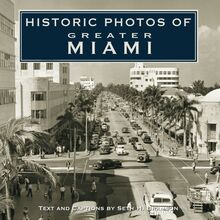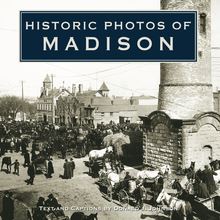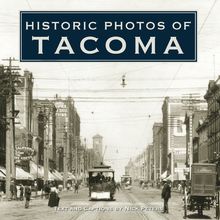Historic Photos of Paris , livre ebook
192
pages
English
Ebooks
2007
Vous pourrez modifier la taille du texte de cet ouvrage
Obtenez un accès à la bibliothèque pour le consulter en ligne En savoir plus
Découvre YouScribe en t'inscrivant gratuitement
Découvre YouScribe en t'inscrivant gratuitement
192
pages
English
Ebooks
2007
Vous pourrez modifier la taille du texte de cet ouvrage
Obtenez un accès à la bibliothèque pour le consulter en ligne En savoir plus
Publié par
Date de parution
01 novembre 2007
Nombre de lectures
1
EAN13
9781618586667
Langue
English
Poids de l'ouvrage
6 Mo
Paris, the capital of France, is one of the most popular destinations in the world. The "City of Lights" is renowned for many things. Its history, beauty, high quality of life, cosmopolitanism, art, fashion, cuisine, cultural diversity, romance, architecture, museums, theaters, and intellectual life. For these and countless other reasons, Paris immediately evokes strong sentiment, whether or not one is lucky enough to have been there.
This book, Historic Photos of Paris, explores the rise of this seductive city, through a collection of extraordinary historic photographs from international archives. The book follows the people, places, and historic events that shaped the development of modern Paris in the nineteenth and twentieth centuries. Iconic landmarks, scenes of daily life, and unique and rare moments are presented in hundreds of historic photographs, revealing a rich portrait of the urban masterpiece that is Paris.
Publié par
Date de parution
01 novembre 2007
Nombre de lectures
1
EAN13
9781618586667
Langue
English
Poids de l'ouvrage
6 Mo
HISTORIC PHOTOS OF
PARIS
R EBECCA S CHALL
On August 25, 1944, Paris was finally liberated. Crowds of French patriots line the Champs-Elys es to view Allied tanks and trucks passing through the Arc de Triomphe. On the left, a sign states Vive de Gaulle. At the time of liberation, Charles de Gaulle was revered as a national hero. During the war, de Gaulle created the Free French Forces. On June 18, 1940, he spoke to the French nation over the radio from London, pleading with the French to remain strong in their fight against the Germans. He proclaimed Quoi qu il arrive, la flame de la r sistance fran aise ne doit pas s teindre et ne s teindra pas, meaning Whatever happens, the flame of the French Resistance must not be extinguished and will not be extinguished. This speech had a great impact on the French. De Gaulle set up intelligence networks to prevent Germans from invading England through the British Channel. The Free French Forces helped inform de Gaulle of German military activity along the Atlantic Coast and the English Channel.
HISTORIC PHOTOS OF
PARIS
Turner Publishing Company
200 4th Avenue North Suite 950
Nashville, Tennessee 37219
(615) 255-2665
www.turnerpublishing.com
Historic Photos of Paris
Copyright 2007 Turner Publishing Company
All rights reserved.
This book or any part thereof may not be reproduced or transmitted in any form or by any means, electronic or mechanical, including photocopying, recording, or by any information storage and retrieval system, without permission in writing from the publisher.
Library of Congress Control Number: 2007929611
ISBN-13: 978-1-59652-388-3
Printed in China
09 10 11 12 13 14-0 9 8 7 6 5 4 3 2
C ONTENTS
A CKNOWLEDGMENTS
P REFACE
T HE N EW P ARIS -A M ODERN C APITAL (T O 1890)
L A B ELLE POQUE -T HE B EAUTIFUL A GE (1891-1914)
T HE G REAT W AR AND THE G OLDEN T WENTIES (1915-1929)
T HE I NTERWAR C RISIS (1930 S )
T HE W AR Y EARS -O CCUPATION AND L IBERATION (1940-1945)
T HE P OSTWAR Y EARS (1946-1960 S )
N OTES ON THE P HOTOGRAPHS
People enjoy themselves around the grand pond at the Jardin de Tuileries in 1955.
A CKNOWLEDGMENTS
This volume, Historic Photos of Paris , is the result of the cooperation and efforts of many individuals and organizations. It is with great thanks that we acknowledge the valuable contribution of the following for their generous support:
L Agence de Roger-Viollet in Paris
The Library of Congress
-------
For my family-Mom, Dad, and Teddy. Thank you for your uncompromising loyalty, encouragement, support, and for showing me the world.
Fran Schall
Leah Boyer
Gerry Schall
Eliana McCaffery
Teddy Schall
Sergio Romero
Celie Fox-Cabane
Lee Pinkas
Bernard Cabane
Kristin Henderson
Lyne Cohen-Solal
Amanda Uraiqat
Micka l Verite
Pat Levin
Monique Commingues
Judson True
Michele Riesenmey
Andrew Lack
Nathalie Doury
Mlle., M., and baby Bronco
P REFACE
If you are lucky enough to have lived in Paris as a young man, then wherever you go for the rest of your life it stays with you, for Paris is a moveable feast.
- Ernest Hemingway
Paris, with its magnificent architecture, historical significance, and cultural savoir faire, has the remarkable power to seduce anyone who has visited the city. Throughout the centuries, Parisians have treated their city as a masterpiece-in-progress, continually enhancing its beauty by contracting the most revered artists for its architecture, sculpture, and paintings. Parisians go to great efforts to preserve the historical and aesthetic integrity of the city, meticulously maintaining it as a piece of art in a phenomenon known in French as mus ification-preserving the city as a living museum.
Located at an international crossroads where different cultures thrive, the vibrant capital is constantly changing, yet continually celebrating its historical and artistic legacy. Paris has endured everything from Viking raids to Nazi occupation, even banalization by invading global chain stores in recent years. For more than two millennia, the urban landscape of Paris has constantly been altered by social, political, and religious trends, as well as population growth. Each epoch has contributed something enduring to the Parisian landscape, reflecting the political demands of the people and the spirit of the age. As Paris expanded its walls to accommodate a growing population, it removed parts of its architectural heritage, while adding new layers, oftentimes incorporating the ruins of previous structures into new buildings. Today, Paris is a rich mosaic of many centuries of architecture, from preserved Gallo-Roman ruins to modern high rises.
When photography emerged in France in the nineteenth century, it allowed people to capture the modern world and document its history in an unprecedented way. Although the photographer can make decisions regarding subject matter and how to capture and present it, photographs, unlike words, seldom offer subjective interpretations of history. This lends them an authority that textual histories sometimes fail to achieve, and offers the viewer an original, untainted perspective from which to draw conclusions, interpretations, and insights.
Millions of historic photos of Paris reside in archives, both in the capital itself, and around the world. This book began with the recognition that, while those photographs are of great interest to many, they are not always easily accessible.
This book is the result of countless hours of reviewing thousands of images, in l Agence de Roger-Viollet in Paris and the Library of Congress photographic archives, as well as extensive historical research. I greatly appreciate the generous assistance of those at Roger-Viollet and others listed in the acknowledgments, without whom this project could not have been completed.
The goal in publishing this work is to provide broader access to extraordinary photographs that will inspire, educate, and preserve Paris past with proper respect and reverence. The photographs selected have been reproduced in their original black-and-white format. With the exception of cropping images where needed and touching up imperfections that have accrued over time, no other changes have been made. The caliber and clarity of many photographs are limited by the technology of the day and the ability of the photographer at the time they were made.
This book is divided into six chapters, representing modern eras in the history of Paris. Chapter 1 looks at the city from the mid nineteenth century to 1890-one of the most pivotal times in the city s history. The period included Haussmann s rebuilding of Paris, the Prussian siege, and the Commune-the bitter civil war that followed the siege, during which Paris emerged in its modern form. The second chapter explores the period in France known as la Belle poque, or the beautiful age, from 1890 until the eve of the First World War. Chapter 3 covers Paris from the start of the Great War through the 1920s, when Paris became a destination for the Lost Generation. Chapter 4 looks at the turbulent interwar period of Paris in the 1930s. Chapter 5 focuses on the German occupation that Paris endured during World War II and the city s liberation by Allied forces at the war s end, and the concluding chapter looks at postwar Paris, stopping at the end of the 1960s when radical movements swept the political and social spheres of the capital.
In each section, Historic Photos of Paris attempts to capture various aspects of Parisian life through the selection of photographs, featuring important people, places, events, architecture, commerce, transportation, infrastructure, religious and educational institutions, artistic life, and everyday scenes to provide a broad perspective. I encourage readers to reflect as they gain new appreciation for the momentous history and beauty of the urban masterpiece that is Paris.
Paris is at a crossroads of land and water routes in an area rich in agriculture. This made Paris one of the leading European cities for trade, commerce, arts, learning, and culture, and a center of international transportation. This panorama of Paris was taken around 1865, during the time that Paris assumed its modern form. In the 1860s, Baron G. Haussmann annexed large tracts of land from what had once been the countryside, doubling the size of Paris to accommodate the expanding population. Twenty arrondissements, or municipal boroughs, were created in a juxtaposing clockwise circle resembling a snail s shell. More than 30 million visitors come to Paris annually, which generates the revenue needed for the preservation of old monuments, and the construction of new ones.
T HE N EW P ARIS -A M ODERN C APITAL
(T O 1890)
Paris underwent the most dramatic transformation in its history during the nineteenth century. During the first half of the century, the city was in crisis. In many ways, the capital was still essentially medieval, with horrible overcrowding, rampant disease, poverty, crime, revolutions, and obstacles to navigation and transportation. While the Industrial Revolution was modernizing the Western world, Paris was being held back by continued political turmoil and social discontent. Motivated by public health concerns, a need for political security and national stability, and a desire to strengthen his imperial rule during the Second Empire, Napoleon III initiated one of the most spectacular urban renewal and building projects in history. He appointed urban planner and financier Baron G. Haussmann as Prefect of the Seine in 1853, who became so closely associated with the modernization of Paris that his name is used as a noun to describe the process of the rebuilding of Paris itself-Haussmannization.
Within several decades, nearly 75 percent of Paris was demolished and rebuilt. Grand boulevards replaced unsanitary medieval slums and the illogical mazes of winding streets. Paris metamorphosed into a beautiful modern capital with elegant














